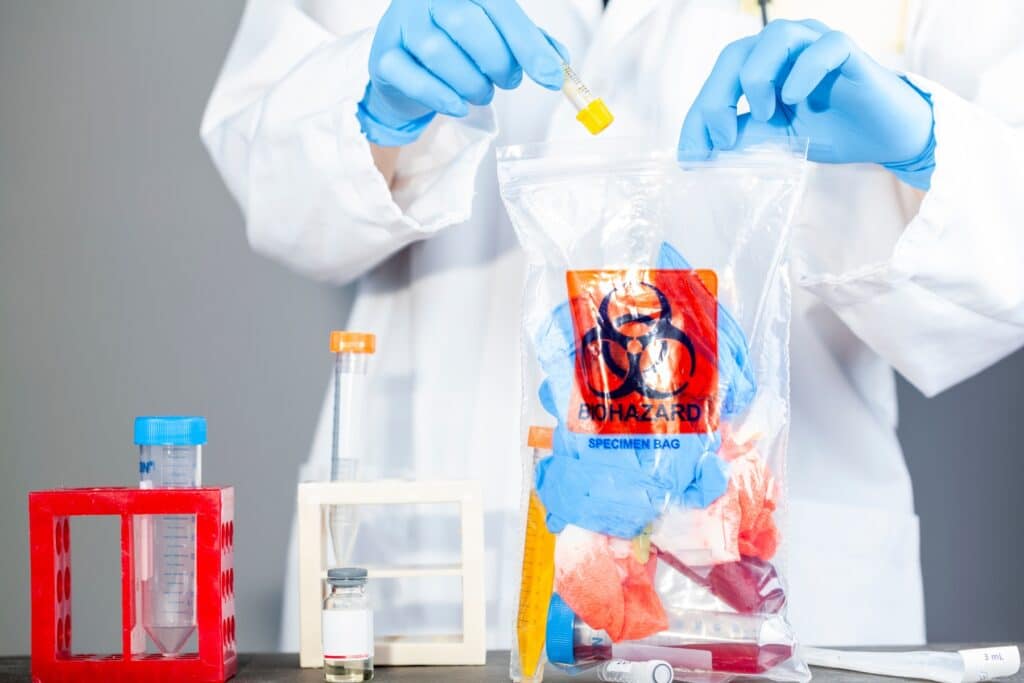Tips for Effective Medical Waste Segregation in Healthcare Facilities

Proper medical waste segregation is crucial in healthcare facilities to ensure the safety of staff, patients, and the environment. This blog post will discuss tips and best practices for adequate medical waste segregation.
Understand the Different Types of Medical Waste:
There are various categories of medical waste types, including sharps, infectious waste, pharmaceutical waste, and non-hazardous. Understanding these categories is essential for proper segregation.
Knowing each type’s specific characteristics and disposal requirements is essential when segregating medical waste. This knowledge helps prevent cross-contamination and ensures compliance with waste management regulations.
Establish Clear Segregation Guidelines:
Develop comprehensive guidelines for medical waste segregation in your healthcare facility. Communicate these guidelines to all staff members involved in waste management to ensure consistency and compliance.
The guidelines should outline the specific procedures for segregating different types of waste, including using color-coded containers, proper labeling, and secure closure systems. Ensure the guidelines are easily accessible to all staff members and regularly updated to reflect any changes in waste disposal regulations.
Provide Sufficient Training:
Educate all healthcare personnel on the importance of waste segregation and provide training on the specific segregation procedures. Ensure they know the potential risks associated with improper segregation and the proper handling techniques.
Training sessions should cover topics such as identifying different types of medical waste, using the correct containers, understanding disposal requirements, and adhering to safety protocols. Encourage staff members to ask questions and provide ongoing training to new employees or when there are updates to waste management practices.
Use Color-Coded Containers:
Color-coded containers are an effective visual aid for segregating different types of medical waste. Use distinct colors for sharps, infectious waste, pharmaceutical waste, and other categories to minimize the risk of cross-contamination.
For example, red containers can be designated for sharps waste, yellow for infectious waste, blue for pharmaceutical waste, etc. Ensure the color-coded containers are prominently displayed and easily identifiable in waste collection areas.
Label Containers Properly:
Ensure all waste containers are labeled accurately with the appropriate waste category. Clear labeling helps prevent confusion and ensures proper segregation throughout the waste management process.
Labels should include information such as the waste type, disposal requirements, and any specific instructions for handling. Regularly inspect the labels to ensure they are intact and legible, and promptly replace any damaged or faded labels.
Label Containers Properly:
Ensure all waste containers are labeled accurately with the appropriate waste category. Clear labeling helps prevent confusion and ensures proper segregation throughout the waste management process.
Labels should include information such as the waste type, disposal requirements, and any specific instructions for handling. Regularly inspect the labels to ensure they are intact and legible, and promptly replace any damaged or faded labels.
Implement Secure Closure Systems:
To prevent accidental spillage or release of hazardous waste, implement secure closure systems for waste containers. It helps minimize the risk of exposure to harmful substances during handling and transportation.
Choose containers with secure lids or caps that provide a tight seal. It ensures the waste is safe until it reaches the designated disposal facility. Conduct regular checks to ensure the closure systems function correctly and replace faulty containers or lids.
Implement Secure Closure Systems:
To prevent accidental spillage or release of hazardous waste, implement secure closure systems for waste containers. It helps minimize the risk of exposure to harmful substances during handling and transportation.
Choose containers with secure lids or caps that provide a tight seal. It ensures the waste is safe until it reaches the designated disposal facility. Conduct regular checks to ensure the closure systems function correctly and replace faulty containers or lids.
Regularly Monitor and Audit Waste Management Practices:
Perform regular audits to assess the effectiveness of waste segregation practices in your healthcare facility. Identify any areas for improvement and provide additional training or resources as needed.
Regular monitoring and auditing help ensure ongoing compliance with waste segregation guidelines. It also provides an opportunity to identify any issues or gaps in waste management practices and take corrective actions promptly.
Conclusion:
Adequate medical waste segregation is vital for maintaining a safe and sustainable healthcare environment. By understanding the different types of medical waste, establishing clear guidelines, providing training, using color-coded containers, proper labeling, implementing secure closure systems, and regularly monitoring practices, healthcare facilities can ensure proper waste segregation, minimize the risk of contamination, and contribute to a healthier and cleaner environment.
Reference:
https://apps.who.int/iris/bitstream/handle/10665/259491/WHO-FWC-WSH-17.05-eng.pdf


